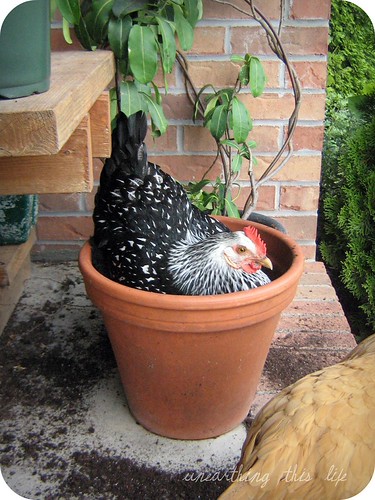We devoted April to gardening; April is the time to ready for the new growing season here in the frozen north (ish), and it was one for the records.  Twenty-five straight days of gloom and/or rain does not make even the cool-friendliest plants feel very friendly.
Twenty-five straight days of gloom and/or rain does not make even the cool-friendliest plants feel very friendly.
Gardeners sometimes have blinders on; they see what’s happening in their in their own space, under their own feet, and in that one little hole in the ground. It’s helpful, in our wealthy and diverse society, to put it in perspective. I may have lost my broccoli, but I’ve got a grocery store down the street and four farmers’ markets in walking distance. I may have had a month without sun, but a tornado did not knock my town off the map, and a fire did not force me into a car with all my livestock, and my well did not go dry (all things that happened to friends here at Not Dabbling, and on My Folia).
I’m looking out my back door right now at grass so green it’s almost a religious experience. I’ll have a garden, and food, and a roof over my head and a loving, whole family. We’re just getting started every day.
***
I don’t know about Xan, but for me, Jennifer, gardening season brings out the frantic in myself. I feel like there’s always something to do and there’s never time to rest. It’s not until all of those little babies are in the ground that I’ve started that I can actually stop to take a breath – and that’s sometime toward the end of May. By that time I’m ready to start picking! I suppose that’s the problem of growing our own and doing the best we can to be self-sufficient.
In the past I’ ve felt like a failure because I’ve had crops that didn’t make it in one particular year, or three in a row thanks to late frosts or droughts. I’ve had to make difficult choices like cutting back my rosemary bush so hard that it looks like Charlie Brown’s Christmas tree, or whether to stay organic or add topsoil to my garden beds just for the quick fix. There are years that no matter how hard you try to make something work that the end result will be for naught. Then there are those seasons that turn out so perfectly and abundant that you can’t find enough people to share with, and yet to put a finger on anything you’ve done differently is impossible.
ve felt like a failure because I’ve had crops that didn’t make it in one particular year, or three in a row thanks to late frosts or droughts. I’ve had to make difficult choices like cutting back my rosemary bush so hard that it looks like Charlie Brown’s Christmas tree, or whether to stay organic or add topsoil to my garden beds just for the quick fix. There are years that no matter how hard you try to make something work that the end result will be for naught. Then there are those seasons that turn out so perfectly and abundant that you can’t find enough people to share with, and yet to put a finger on anything you’ve done differently is impossible.
Gardening is what I do to escape the rest of my obligations and take time out for myself. I actually enjoy the hard work, mentally and physically. And regardless of the sunburns, the sweat, those failed crops, the gorgeous blooms that got eaten by the neighbors :insert critter here:, most gardeners with that same kind of passion will come back to it with open arms.
***
Ah, I have to admit I tend toward the frantic as well over here at Tanglewood. I spend all winter planning and plotting and when spring hits I am so overwhelmed that I run around like a madwoman, never quite getting anything done. I suppose in addition to being a frantic gardener, I am also a gardener is transition.
Over the last few years I have gone through a sort of gardener’s metamorphosis. I began interested in simply growing plants. I planted seeds, grew them, potted plants and sold them (or tried) at the local market. Now I find I have become a true gardener. I not only enjoy growing; I enjoy cultivating and tending, shoveling and weeding and hoeing.
This month has shown me that I will never have “enough time” and I can learn to accept that. My list of things to do in the gardens will never shrink, and I will always be coming up with just one more thing to do before the sun goes down. Despite being a frantic gardener, I find my ever-growing list of tasks peaceful in some way. I revel in never finishing; finishing wouldn’t be gardening. It would be gardened.
***














































